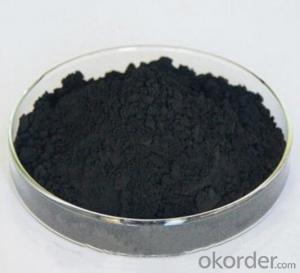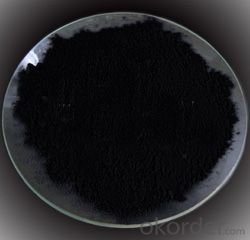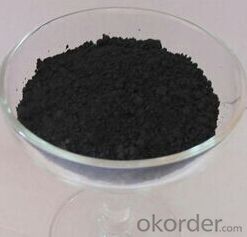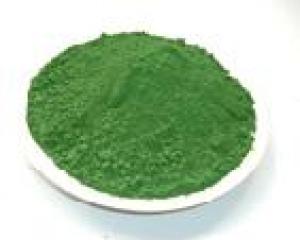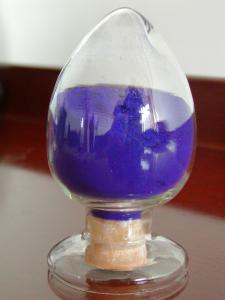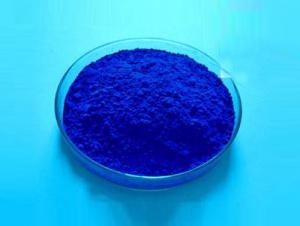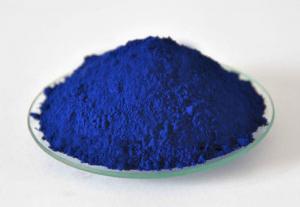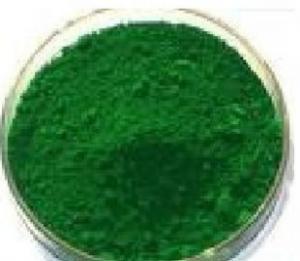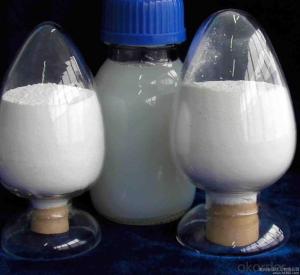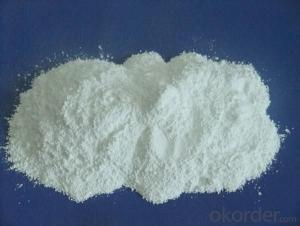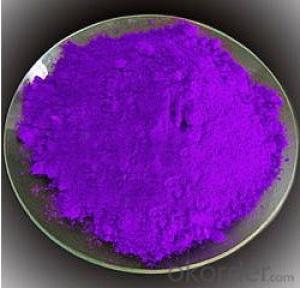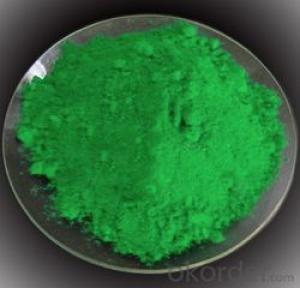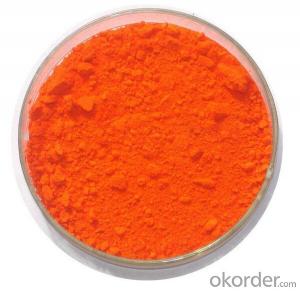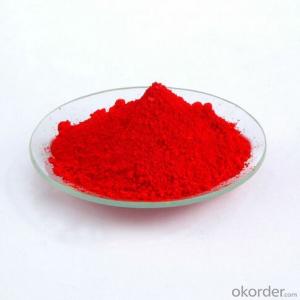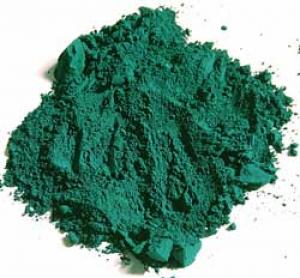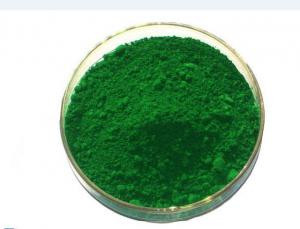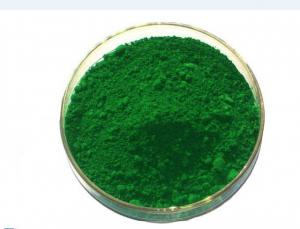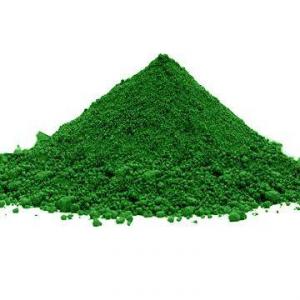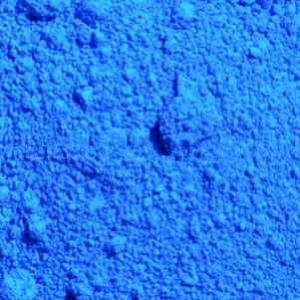Copper Chromite Black Pigment Organic Pigment Powder
- Loading Port:
- Tianjin
- Payment Terms:
- TT OR LC
- Min Order Qty:
- 500 kg
- Supply Capability:
- 6000000 kg/month
OKorder Service Pledge
OKorder Financial Service
You Might Also Like
Black Specifications
Black Paint Pigment-Copper Chromite Black Spinel(P.Bk.28)
High-temperature resistance
Non-toxic pigment
High light fastnes
Black Product Information:
Chemical Name: Copper Chromite Black Spinel
Chemical Composition: Cu/Cr/Fe Oxide
Color Index Name: Pigment Black 28 / P. Blk.28
Color Index Number: 77428
CAS Number: 68186-91-4
Physical Form: Black Powder
Crystal Pattern: Spinel Pattern
Black Product Characteristics:
Pigment Black 28 is one kinds of environmental protection pigments, which is internationally recognized as non-toxic pigments.It has excellent heat resistance, weather resistance, lightfastness, chemical resistance, as well as good hiding power.
Black Main Technical Data:
Heat Resistance | ≤1000°C |
Light Resistance (Grade 1-8) | 8 |
Weather Resistance (Grade 1-5) | 5 |
Acid Resistance (Grade 1-5) | 5 |
Alkali Resistance (Grade 1-5) | 5 |
Oil Absorption | 18-22g/100g |
Density | 4.8-5.6 g/cm3 |
PH | 7-9 |
Mean Particle Size | ≤1.5 µm |
Black Packaging & Delivery
Packing Detail: Per 25 kgs pack in one cardboard drum and inner lined with secure plastic bag.
Delivery Detail: Within 15~20 days after 30% advanced.
Black Advantages:
High-temperature resistance, High light fastness resistance, Acid resistance,
Alkali resistance, Weather resistance, Easy to disperse, Non-migration, Non-bleeding.
Black Regulations:
Compliant to EU RoHS 2002/95/EC
Compliant to EN71Part 3:1994 (A1:2000/AC2002)
Compliant to US FDA 21 CFR 177.1520
Compliant to ASTM F963-08 (Clause 4.3.5)
Compliant to REACH
- Q: okay so I have always used all the cheap makeup and I am sick of it! I was wondering if mac pigments will give me a lot of color without having to use half of the container. Most eyeshadows look nothing like they are supposed to on me. they are like 100 times lighter. I have seen beautiful things done with the pigments but they look like they could get everywhere really easy. will they give me vibrant color without getting all over?
- Mac okorder it's only $0.99 a for either kind for .06 oz, you just need to use a eye primer for the best color results ( same as mac when using primer see you tube videos on NYX vs MAC pigments for proof). Plus cherryculture has numerous other makeup brands for dirt cheap. Hope this helps. Also all pigments should be applied with a slightly damp brush and a primer for the hugest impact. Used alone they are sheer and end up all over your face. If brush is dampened with no primer used on the eye they work ok but you get a lot of creasing, and it still won't be that dramatic look you are wanting. I realized this after major internet searching and trial and error, because I was upset I paid so much for the HIP pigment and it just wasn't staying put nor was it showing up. So again hope this helps.
- Q: There was a question, not to long ago, that asked are L'oreal HIP pigments good? What are pigments?
- Pigments are tones. Like if you have a base color of white and add a light pink and as you go down it gets darker. There would be several pigments of pink tones.
- Q: If you could explain it to me I would be very happy!
- Accessory pigments are light-absorbing compounds, found in photosynthetic organisms, that work in conjuction with chlorophyll a. They include other forms of this pigment, such as chlorophyll b in green algal and higher plant antennae, while other algae may contain chlorophyll c or d. In addition, there are many non-chlorophyll accessory pigments, such as carotenoids or phycobiliproteins which also absorb light and transfer that light energy to photosystem chlorophylls. Some of these accessory pigments, particularly the carotenoids, also serve to absorb and dissipate excess light energy, or work as antioxidants.
- Q: I love the colours that pigments come in but I don't know how to use them. Is there any easy way?
- Pigments can be used the same way as your typical eyeshadows. Sponge applicators allow for a more vivid and intense colour pay off, while using a regular eyeshadow brush gives off a more sheer finish. Pigments can get messy, especially on your face. A good trick to remember is to dust a generous amount of translucent powder under the eye area before using pigments. This way if there is any powder fallout you will be able to sweep it all off without problems.
- Q: How are plant pigments like teammates on a sports team? And What is the goal of their teamwork??
- Pigments in the reaction center work together to organize themselves in place, to protect the plant from injury from incidental light, and to absorb photons from the spectrum with each pigment catching its own portion of the incoming wavelengths. The accessory pigments catch and pass energy to chlorophyll a. Chlorophyll a is the specialist that plays the photon's electromagnetic energy into chemical. It splits water to release its electrons and hydrogen ions for use in the calvin cycle where glucose is manufactured. The goal is to fix energy into a usable organic form for the plant to live on.
- Q: i bought the new neon pro pigments from mac , well 5 out of the six and i also bought 'basic red'i want to use these as eye shadows but i dont know howi also bought mac mixing medium for face and body but lol , i dont know how to use any of this stuffwhat can i do to use this stuff i mean will it turn out like regular eyeshadow if i use it right? will there be a shine to it? it will reduce fall out? should i put the mixing medium on my eye first , then let dry?do i need to possibly press the pigments in a pot with some kind of eye shadow liquid?i also bought the mascara mixing medium but want to know exactly what to do with thatand also , can i mix any of the pigments with lipgloss?http://cn1.kaboodle /hi/img/2/0/0/119/a/AAAAAlrx1LUAAAAAARmgiA.jpg
- when you use a pigment, it's always better to apply it wet since it's a loose shadow. with the mixing medium, put a few drops of it on to some kind of surface, like the lid of the jar or even on your hand. if you dropped it in the lid, tap a little shadow into the lid and mix it with your brush. you want a thick, kind of pastey consistency. if your put it on your hand, did your brush into the drops of mixing medium and then then dip the wet brush into the pigment jar. then all you gotta do is apply it to your lid. but make sure you put a base on your lid before applying! good luck! =]
- Q: Pleaseeeeee answer A.S.A.P Pleaseeee! Are pigments haram?
- Most pigments for dyes and paints come from plants or minerals. What exactly do you need? The second part of your question about haram, needs some explanation, too.
- Q: a. chlorophyll ab. chlorophyll bc. chlorophyll cd. carotenoid pigments
- Chlorophylls are greenish pigments which contain a porphyrin ring. This is a stable ring-shaped molecule around which electrons are free to migrate. Because the electrons move freely, the ring has the potential to gain or lose electrons easily, and thus the potential to provide energized electrons to other molecules. This is the fundamental process by which chlorophyll captures the energy of sunlight. There are several kinds of chlorophyll, the most important being chlorophyll a. This is the molecule which makes photosynthesis possible, by passing its energized electrons on to molecules which will manufacture sugars. All plants, algae, and cyanobacteria which photosynthesize contain chlorophyll a. A second kind of chlorophyll is chlorophyll b, which occurs only in green algae and in the plants. A third form of chlorophyll which is common is (not surprisingly) called chlorophyll c, and is found only in the photosynthetic members of the Chromista as well as the dinoflagellates. The differences between the chlorophylls of these major groups was one of the first clues that they were not as closely related as previously thought. Carotenoids are usually red, orange, or yellow pigments, and include the familiar compound carotene, which gives carrots their color. These compounds are composed of two small six-carbon rings connected by a chain of carbon atoms. As a result, they do not dissolve in water, and must be attached to membranes within the cell. Carotenoids cannot transfer sunlight energy directly to the photosynthetic pathway, but must pass their absorbed energy to chlorophyll. For this reason, they are called accessory pigments. One very visible accessory pigment is fucoxanthin the brown pigment which colors kelps and other brown algae as well as the diatoms. From this I would say the answer is c.
- Q: how exactly do pigments work? i know that they absorb every color except the one that we see, but what are the exact physics or whatever behind the selective absorption of the light?
- Different pigments mostly absorb different range at different wavelength of light, but plant -as I know- mostly containing chlorophyll does not absorb green light so we see plants as green.
- Q: what is the function of pigment molecules in photosynthesis?
- They absorb light from the sun
Send your message to us
Copper Chromite Black Pigment Organic Pigment Powder
- Loading Port:
- Tianjin
- Payment Terms:
- TT OR LC
- Min Order Qty:
- 500 kg
- Supply Capability:
- 6000000 kg/month
OKorder Service Pledge
OKorder Financial Service
Similar products
Hot products
Hot Searches
Related keywords
